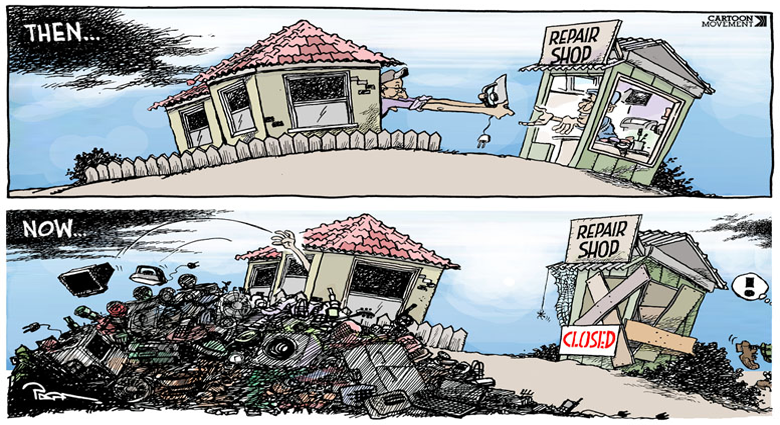There is a lot of hype and buzz around business intelligence. Companies are investing millions of dollars in business intelligence technology. However, unless this is accompanied by the simultaneous creation of a strong foundation for taking intelligent business actions, they are unlikely to reap a good return on that investment.
Leaders need to anticipate variation.
An analogy might help explain what we mean by this. Imagine a plane heading from Dallas to New York. If that flight’s trajectory were just a degree off, it would end up in the ocean instead. The fact is that planes are more than a degree off 95% of the time, yet most planes land where they are supposed to. In spite of all the storms, the changing wind conditions, turbulence, and all the volatility and uncertainty they encounter along the way, they manage to land at their intended destination. Similarly, we believe the primary purpose of an investment in business intelligence should be to help companies reach their intended destinations in spite of all the storms they are likely to encounter along the way. So by learning how pilots are successful, leaders can get a much better return on their business intelligence initiatives.
How is the pilot successful? By managing six critical variables effectively. These variables are the essential ingredients for business success:
- Starting Point . The pilot knows clearly that he is starting in Dallas. There is nothing clouding his understanding of the current reality as it is, not as he would like it to be, not as it appears to be, not as his copilot describes it to be. Similarly, there should be a good, data-centered understanding of the reality as it is — with holistic data across the functional silos, that is available in a timely manner, and which describes the current status of the business accurately.
- Destination . The pilot can’t just land in a random location and declare, “You have arrived.” He must make proactive choices to reach a predetermined destination. Similarly, business intelligence must be viewed against the backdrop of a clear vision, goals, and strategy, and used as a means to getting there, rather than viewed in isolation or as a technology initiative. This vision should then be cascaded down so each decision maker has a clear idea of the destination they are working toward, while at the same time, ensuring that all these will add up to the same common goal.
- The Plan . The pilot doesn’t take off until he has a clear flight plan, and he can understand how it will take him from the starting point to the destination. Similarly, business intelligence must be leveraged to create a plan that charts a path from where the organization is today to where it should be in the future. A visual way of depicting the plan — one that connects the starting point and the destination, and takes into account all the nuances of a business (more sales in fourth quarter, a spike in sales at month end and quarter end, etc.), seasonality, trends, etc. — will help with understanding the next variable, variation. In our experience, this element is weak in most business intelligence initiatives.
- Variation . The pilot knows that he is going to be off 95% of the time. He expects variation from the plan and deals with it. Similarly, leaders need to anticipate variation. They should neither freeze in surprise when there is variation, nor should they create so much noise that the signal gets drowned out. Just like the pilot makes a calm assessment and operates the right levers, leaders need to create a climate and culture where people can make a calm assessment and fine-tune the right set of drivers. Without this one simple prerequisite, we have seen many business intelligence initiatives fail.
- Act Early. When you are a degree off and you correct it early, it may be a matter of no more than a mile. Leave it for a while and it can compound quickly to hundreds of miles off course. The pilot has a cockpit full of tools that tell him where he is relative to where he should be and provide the visual cues he needs to act early and course correct often. Similarly, business intelligence must provide the visual and data-centered cues that show people the widening nature of the gap. For example, a bar chart by time period, one of the most common visual tools used, may not show the widening gap. However, a cumulative line graph can visually highlight the widening nature of the gap in a powerful way. Further, sales variation can get widened much more when it comes to financial variation because of fixed costs. It is not uncommon for a 5% drop in revenue to result in a 30% drop in profitability. Along the same lines, a 5% drop in revenue can result in a 50% drop in market cap. Such gaps must be exposed clearly and visually so employees understand the true impact of making decisions early.
- Act Often. The pilot is making dynamic course corrections, perhaps every minute or so. He is not waiting an hour before deciding what to do. Contrast that with a typical business. A whole month goes by. A couple of weeks later the books are closed. Only then do leaders know where the business was last month. In addition, at best, this gives 12 opportunities for course correction over a typical annual cycle. If a plane were to attempt that Dallas–New York flight with just 12 course corrections, based on where the plane was at the time of the previous course correction, it will most certainly end up in the ocean. As volatility increases and uncertainty builds, the need for more frequent course correction accentuates. If there is only one thing a business intelligence initiative can focus on, we would say, put all that energy and focus on more dynamic, forward-looking course correction.
Unless a strong, intelligent, action-based foundation is in place to address each of these six critical variables, organizations are likely to get swept away by the buzz of business intelligence, become distracted by pretty charts on mobile devices, and end up landing where the winds take them. And when the external forces take charge, there is no guarantee it will be a safe landing. Instead, leaders must guide their companies safely toward their intended destinations.
Leaders must guide their companies safely toward their intended destinations.





.png)




What Did You Think?